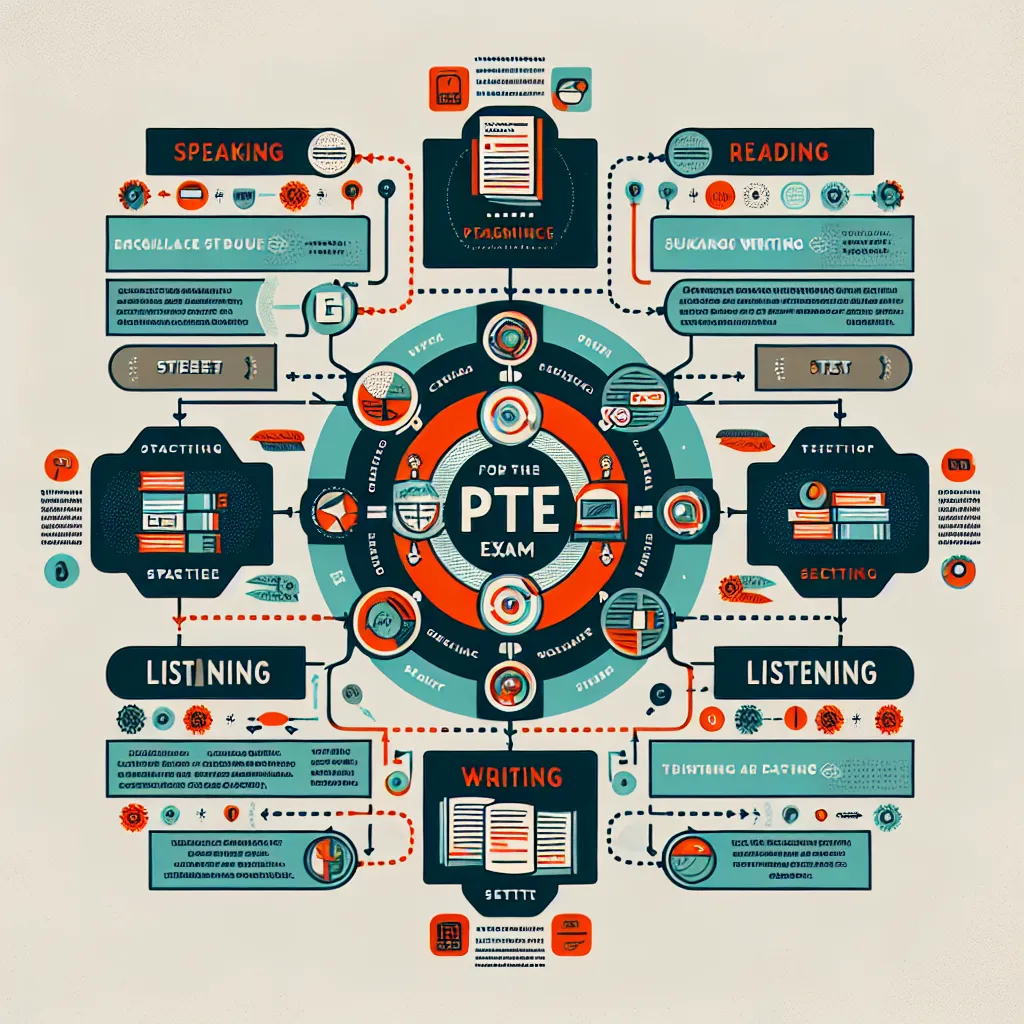Are you preparing for the Pearson Test of English (PTE) Academic? If so, you’re probably aware that this exam can be challenging, with various question types designed to test your English language skills thoroughly. In this comprehensive guide, we’ll explore some of the trickiest questions you might encounter in the PTE exam and provide strategies to tackle them effectively.
Understanding the PTE Exam Structure
Before we dive into the tricky questions, let’s briefly review the structure of the PTE exam. The test is divided into four main sections:
- Speaking and Writing
- Reading
- Listening
- Writing
Each section contains different question types, some of which are more challenging than others. Let’s explore the most difficult questions in each section.
 PTE Exam Structure
PTE Exam Structure
Tricky Questions in the Speaking and Writing Section
Read Aloud
While this task may seem straightforward, it can be surprisingly challenging. Here’s why:
- Time pressure: You have only 30-40 seconds to read a text of 60-80 words.
- Pronunciation and fluency: You need to pronounce words correctly and maintain a natural flow.
- Intonation and stress: Proper emphasis on key words is crucial.
Strategy: Practice reading aloud regularly, focusing on clear pronunciation and natural intonation. Record yourself and listen back to identify areas for improvement.
Describe Image
This task often catches test-takers off guard due to its complexity:
- Limited preparation time: You have only 25 seconds to analyze the image.
- Comprehensive description: You must cover key features, trends, and data in just 40 seconds.
- Coherent structure: Your response should have a clear introduction, body, and conclusion.
Strategy: Develop a template for describing different types of images (graphs, charts, maps, etc.). Practice summarizing key information quickly and concisely.
Challenging Questions in the Reading Section
Multiple-Choice, Choose Multiple Answers
This question type is particularly tricky because:
- Multiple correct answers: You need to select all correct options, not just one.
- Negative marking: Incorrect selections result in point deductions.
- Time management: These questions can be time-consuming.
Strategy: Read the question carefully, eliminate obviously incorrect options, and double-check your selections before moving on.
Re-order Paragraphs
Re-ordering paragraphs can be difficult due to:
- Complex logical connections: You need to understand how ideas flow between paragraphs.
- Time constraints: Analyzing and arranging 4-5 paragraphs quickly can be challenging.
- No context: Unlike in real-world reading, you don’t have a title or introduction to guide you.
Strategy: Identify topic sentences and linking words to establish logical connections. Practice with various texts to improve your speed and accuracy.
 Reorder Paragraphs Task
Reorder Paragraphs Task
Difficult Questions in the Listening Section
Summarize Spoken Text
This task combines listening and writing skills, making it particularly challenging:
- Note-taking under pressure: You must capture key points while listening to a 60-90 second audio.
- Synthesizing information: Your summary should be concise yet comprehensive.
- Time management: You have only 10 minutes to write a 50-70 word summary.
Strategy: Develop efficient note-taking techniques, focusing on main ideas and supporting details. Practice summarizing various types of spoken content regularly.
Fill in the Blanks
This task can be tricky because:
- Audio playback: The recording is played only once, so you must catch the missing words on the first listen.
- Spelling: You need to spell the words correctly, which can be challenging if you’re unfamiliar with them.
- Context understanding: Sometimes, you need to infer the correct word based on the context of the sentence.
Strategy: Improve your listening skills by practicing with various accents and speech patterns. Pay attention to context clues and practice spelling commonly confused words.
Tricky Aspects of the Writing Section
Summarize Written Text
This task combines reading and writing skills, presenting several challenges:
- Comprehension: You need to understand a complex text quickly.
- Synthesis: Identifying and combining main ideas is crucial.
- Concision: Your summary must be within 5-75 words in a single sentence.
Strategy: Practice identifying main ideas and supporting details in various texts. Work on constructing complex sentences that convey multiple ideas clearly and concisely.
Essay Writing
The essay task can be tricky due to:
- Time management: You have only 20 minutes to plan, write, and review your essay.
- Topic unfamiliarity: The essay prompt may cover a subject you’re not well-versed in.
- Word count: Your essay must be between 200-300 words, requiring careful planning.
Strategy: Develop a clear essay structure and practice writing on various topics within the time limit. Focus on presenting a clear argument with relevant examples.
Key Tips for Tackling Tricky PTE Questions
- Time management: Allocate your time wisely across all sections and questions.
- Practice regularly: Familiarize yourself with all question types through consistent practice.
- Develop templates: Create flexible templates for speaking and writing tasks to save time.
- Improve your vocabulary: A robust vocabulary will help you across all sections of the exam.
- Stay calm: Remember that some questions are designed to be challenging, so don’t panic if you encounter difficulty.
Conclusion
The PTE exam contains various tricky questions designed to thoroughly assess your English language skills. By understanding these challenging aspects and implementing targeted strategies, you can improve your performance and boost your confidence on test day. Remember, consistent practice and familiarity with the exam format are key to success in the PTE Academic.
Are you preparing for the PTE exam? Which question types do you find most challenging? Share your experiences and tips in the comments below, and don’t forget to check out our other articles on PTE preparation for more valuable insights!




